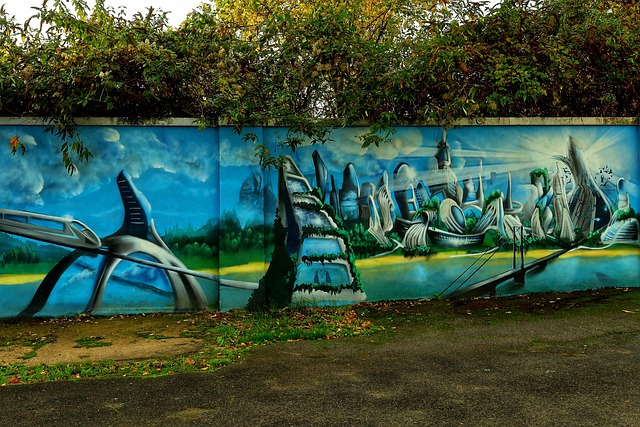# Beyond the Canvas: Exploring the Intersection of AI Technology and Visual Artistry
The relationship between technology and art has always been symbiotic, with each influencing the other throughout history. In recent years, artificial intelligence (AI) has emerged as a transformative force in the realm of visual artistry. By automating processes, generating unique content, and providing new tools for artists, AI is not just reshaping how art is created; it is also redefining the very essence of artistic expression. This article delves into the multifaceted ways AI is influencing visual artistry, highlighting its potential and the challenges it presents.
## The Rise of AI in Artistic Creation
Fundamentally, AI has introduced a new paradigm in creativity. Algorithms can now analyze vast datasets of existing artworks, learning styles, techniques, and aesthetic principles to generate original pieces. Artists are increasingly leveraging AI-powered tools to augment their creative processes. For instance, platforms like OpenAI’s DALL-E and Google’s DeepDream allow users to input prompts that the AI then transforms into visual representations. This capability not only democratizes art creation but also pushes the boundaries of imagination, enabling artists to explore concepts they might not have conceived independently.
Moreover, AI’s ability to learn from diverse artistic movements and styles enables it to create works that resonate with various audiences. By synthesizing elements from cubism, surrealism, and contemporary digital art, AI can produce pieces that evoke nostalgic feelings while simultaneously feeling fresh and innovative. The fusion of these styles is not merely an exercise in mimicry; rather, it serves as a canvas for artists to engage in dialogues about the evolution of art and the role of technology in shaping cultural narratives.
## Collaboration Between Human and Machine
Collaboration is another exciting aspect of AI’s integration into visual artistry. Rather than replacing human creativity, AI tools are designed to complement and enhance the artistic process. Artists can utilize AI to generate ideas, create drafts, or even refine their techniques. This partnership allows for a more experimental approach to art-making, where the artist can iterate rapidly and explore multiple avenues without the constraints of traditional methods.
For instance, the collaborative project “The Next Rembrandt” utilized AI to analyze Rembrandt’s body of work, examining his brush strokes, color palettes, and compositional techniques. The result was a new painting that mirrors the Dutch master’s style, created entirely by an algorithm. This project illustrates how AI can serve as a collaborator, providing insights and suggestions that can lead to groundbreaking artistic outcomes. The implications of such collaborations extend beyond the individual artist, sparking conversations about authorship, originality, and the future of creative professions.
## Ethical Considerations and Future Directions
Despite the exciting possibilities AI presents, ethical considerations loom large in discussions about its role in visual art. Questions arise regarding the authenticity of AI-generated works and the potential for copyright infringement. As AI systems learn from existing artworks, the line between inspiration and imitation can become blurred. Artists and technologists alike must grapple with these issues, determining how to credit sources and navigate the complexities of intellectual property in an age where machines can create at unprecedented scales.
Furthermore, the accessibility of AI tools raises questions about artistic merit and skill. Critics argue that reliance on AI might diminish the value of traditional craftsmanship, while proponents contend that these tools can empower artists to focus on conceptualization rather than technical execution. As the art world continues to evolve, it will be crucial for creators, collectors, and institutions to engage in ongoing dialogues about the implications of AI in artistry, ensuring a balanced approach that respects both innovation and tradition.
Looking ahead, the future of visual artistry in the context of AI is ripe with possibilities. As technology continues to advance, we can expect even more sophisticated tools that allow for greater interactivity and personalization in art creation. Virtual reality (VR) and augmented reality (AR) are beginning to intersect with AI, offering immersive experiences that could redefine how audiences engage with art. Imagine walking through a gallery where each piece adapts to your emotional responses, facilitated by AI’s ability to analyze viewer reactions in real-time.
In conclusion, AI is not merely a tool for artists; it is a catalyst for a new era of creativity that challenges our understanding of art itself. By embracing the intersection of AI technology and visual artistry, artists can unlock new realms of expression, collaboration, and innovation. As we navigate this uncharted territory, it is essential to foster a culture of ethical awareness and critical reflection, ensuring that the marriage of human creativity and machine intelligence enriches the artistic landscape for generations to come.

